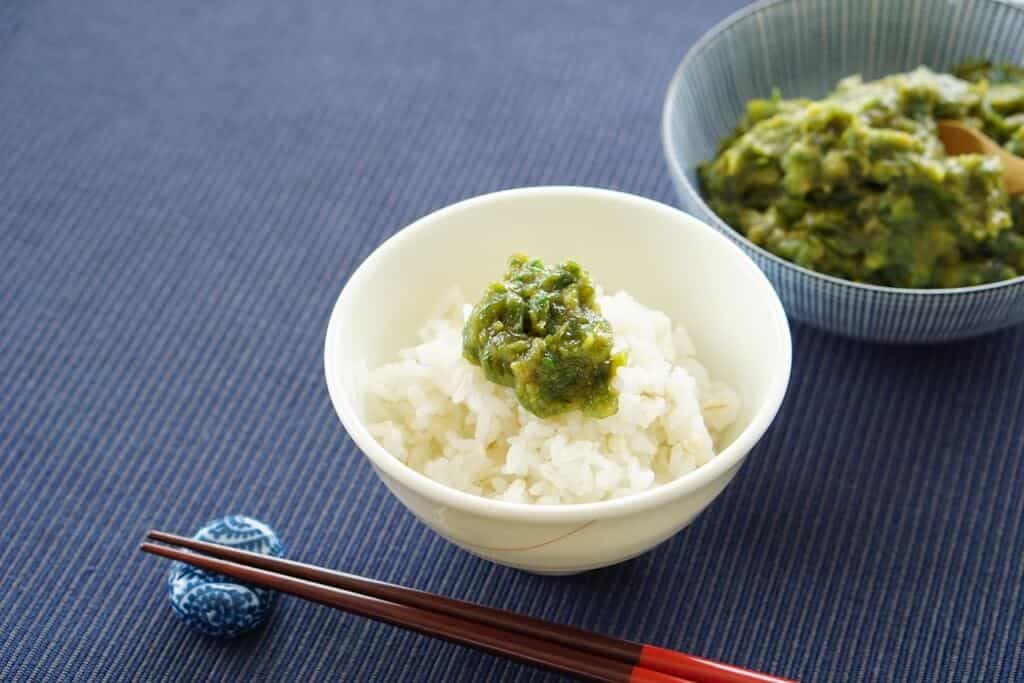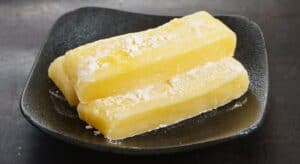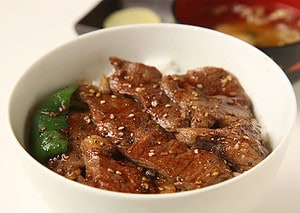Have you ever heard of Niku Tofu ( simmered beef and tofu )? This popular Japanese dish combines the delicate flavors of tofu and meat in a savory broth that will leave you wanting more. It’s a comforting and satisfying meal that’s enjoyed throughout Japan Kyoto. Want to learn more about this delicious dish?
What is Niku Tofu?
Nikudofu is a Japanese simmered dish made with tofu, beef, shiitake mushrooms, onions, soy sauce and dashi. It is widely made in households and restaurants. The original sukiyaki was said to have originated in Kyoto and meat tofu is also made with sukiyaki-style seasoning. In addition, it is often used in Kyoto vegetables called Kujo-negi, which is sweeter than normal onions.
Niku-dofu is a Japanese dish that simmers beef and tofu in soy sauce and sugar. The beef is blanched and drained of water before being added to the broth with tofu, sake, sugar, soy sauce and dashi. The mixture is then simmered for 2-3 minutes over medium heat.
History of NikuTofu
Beef tofu (Niku Tofu) and green onions cooked together make “Nikudofu”, a simple dish. The green onions are often the traditional Kyoto vegetable “Kujo-negi”. They are leafy green onions that originated in 771, when Hata Irogu brought them from Naniwa and planted them when he built the Fushimi Inari Shrine.
Farmers have protected and passed down the seeds of “Kujo-negi” for generations. This has earned them the title “the king of green onions”. One theory suggests that this name originated from the cultivation of high-quality green onions in the Kujo area during the Heian period. The soft inner part of the leaves is rich in slime, sweetness, and aroma. People use them extensively in condiments, hot pots, sukiyaki, simmered dishes, salads, miso soup, and more. Although farmers cultivate them throughout the year, they develop more slime and sweetness in winter, their peak season.
The history of beef in Kyoto is old, and “Tamba beef” appears in “Kokugyu Juzu”, the oldest Wagyu book in Japan drawn in 1310. A sukiyaki restaurant opened in Kyoto city in the early Meiji era. Kyoto Prefecture and Kyoto Beef Distribution Promotion Council defined and branded the high-quality beef produced and raised in the prefecture as “Kyoto beef”. They set criteria such as being a black-haired Japanese breed, being raised in Kyoto Prefecture for the longest time, and being processed at the second market of Kyoto City Central Wholesale Market.
If you want to know more about Tofu, Check here!

What is kujo-negi?
“Kujo-negi” refers to a type of green onion (leaf onion) in Japan, recognized as “Kyoto’s traditional vegetable” by Kyoto Prefecture. The Heian period saw the cultivation of high-quality leaf onions in the Kujo area of Kyoto, leading to the name “Kujo-negi”.
There are two types of Kujo-negi: “Kujo-thick-negi” and “Kujo-thin-negi”. They are cultivated all year round, but they have more slime and sweetness in winter, which is their peak season. The roots of Kujo-negi are said to have been transplanted from Naniwa (present-day Osaka) by Hata Irogu when he built Fushimi Inari Shrine in 771.
Farmers have protected and passed down the seeds of “Kujo-negi” for generations. This has earned them the title “the king of green onions”. One theory suggests that this name originated from the cultivation of high-quality green onions in the Kujo area during the Heian period. The soft inner part of the leaves is rich in slime, sweetness, and aroma. People use them extensively in condiments, hot pots, sukiyaki, simmered dishes, salads, miso soup, and more. Although farmers cultivate them throughout the year, they develop more slime and sweetness in winter, their peak season.
As for nutrition information, 100g of Kujo-negi contains about 30kcal of energy, 1.5g of protein, 0.1g of fat, 6.2g of carbohydrates (including 3.3g of dietary fiber), 20mg of calcium, 0.9mg of iron and 30mg of vitamin C

How to cook niku tofu?
Niku tofu Ingredients
| Ingredients of Niku tofu for 3 persons | Measurements |
|---|---|
| Thinly sliced beef (for sukiyaki) | 200g |
| Firm tofu | 160g |
| kujo leek | 1 bunch |
| Dashi stock | 500cc |
| sake | 1 tablespoon |
| sugar | 2/3 tablespoon sugar |
| soy sauce | 2 tablespoons |
| mirin (sweet cooking sake) | 1 tablespoon |
| salt | Dash of salt |
| Hot chili pepper | a little to taste |
How to make Niku tofu?
Cut green onion and tofu into bite-size pieces.
Drain the beef in boiling water and drain.
Bring soup stock to a boil in a pot, add sake, sugar, beef and tofu, and simmer over medium heat for 2 to 3 minutes.
Add soy sauce and mirin, cover with a lid, and simmer over low heat for 10 minutes.
Finish by adding kujo negi and lightly heat through, then season with salt to taste.

Recommended Monjayaki Restaurants
Mizuguchi Shokudo (水口食堂)
mizuguchi shokudo is located in Asakusa, Tokyo, and offers more than one hundred different kinds of dishes. mizuguchi shokudo’s niku tofu is delicious when eaten with white rice, as its umami flavor spreads slowly.
In addition to meat tofu, you can enjoy a variety of Japanese foods here, such as fried shrimp, tonkatsu, tuna sashimi, omelets, Neapolitan, and more.
New Takoyakushi (ニュータコヤクシ)
Izakaya Nyutakoyakushi is a popular Izakaya (Japanese-style pub) in Kyoto. Known for its lively atmosphere and delicious food, it’s a great place to experience authentic Japanese dining. Whether you’re a local or a tourist, you’re sure to enjoy the unique flavors and warm hospitality at Izakaya Nyu takoyakushi.
Oohashi (大はし)
“Oohashi”, a pub in Tokyo that serves meat tofu and stewed dishes. The owner’s Edo-style personality and skills are really nice. Oohashi is the pub to anyone who wants to taste the Edo spirit and have a quick drink.
Conclusion
Niku Tofu, while not widely recognized outside of Japan, offers an exquisite taste that stands out even among the diverse array of Japanese cuisine. It’s a hidden gem that you might not typically find on the menus of restaurants. However, if you ever come across it or have the opportunity to try it, I highly recommend that you do so. The fusion of meat and tofu creates a delightful harmony of flavors that is sure to leave a lasting impression. So, keep an eye out for this dish and don’t miss the chance to experience this lesser-known facet of Japanese culinary culture.
















Comments